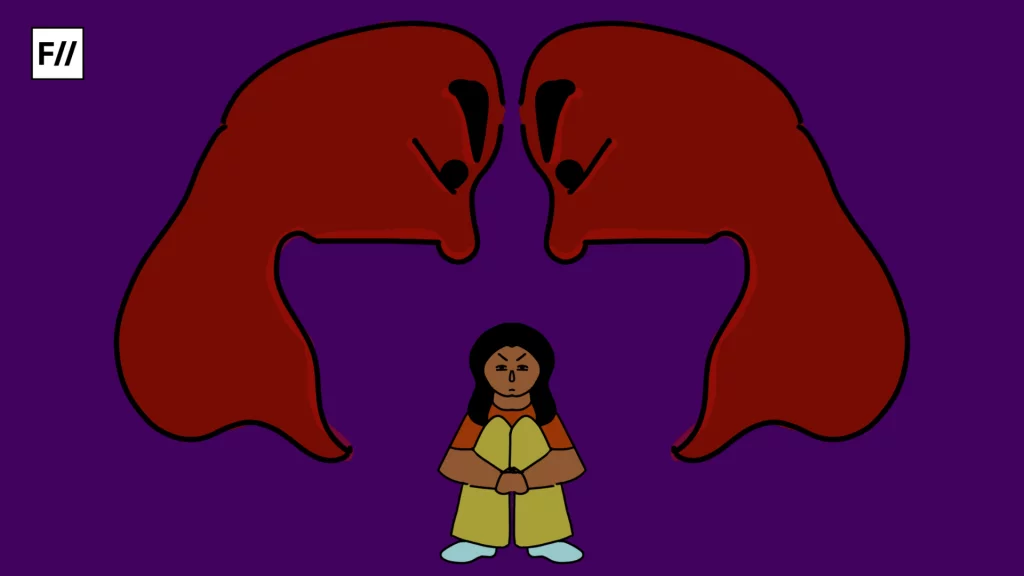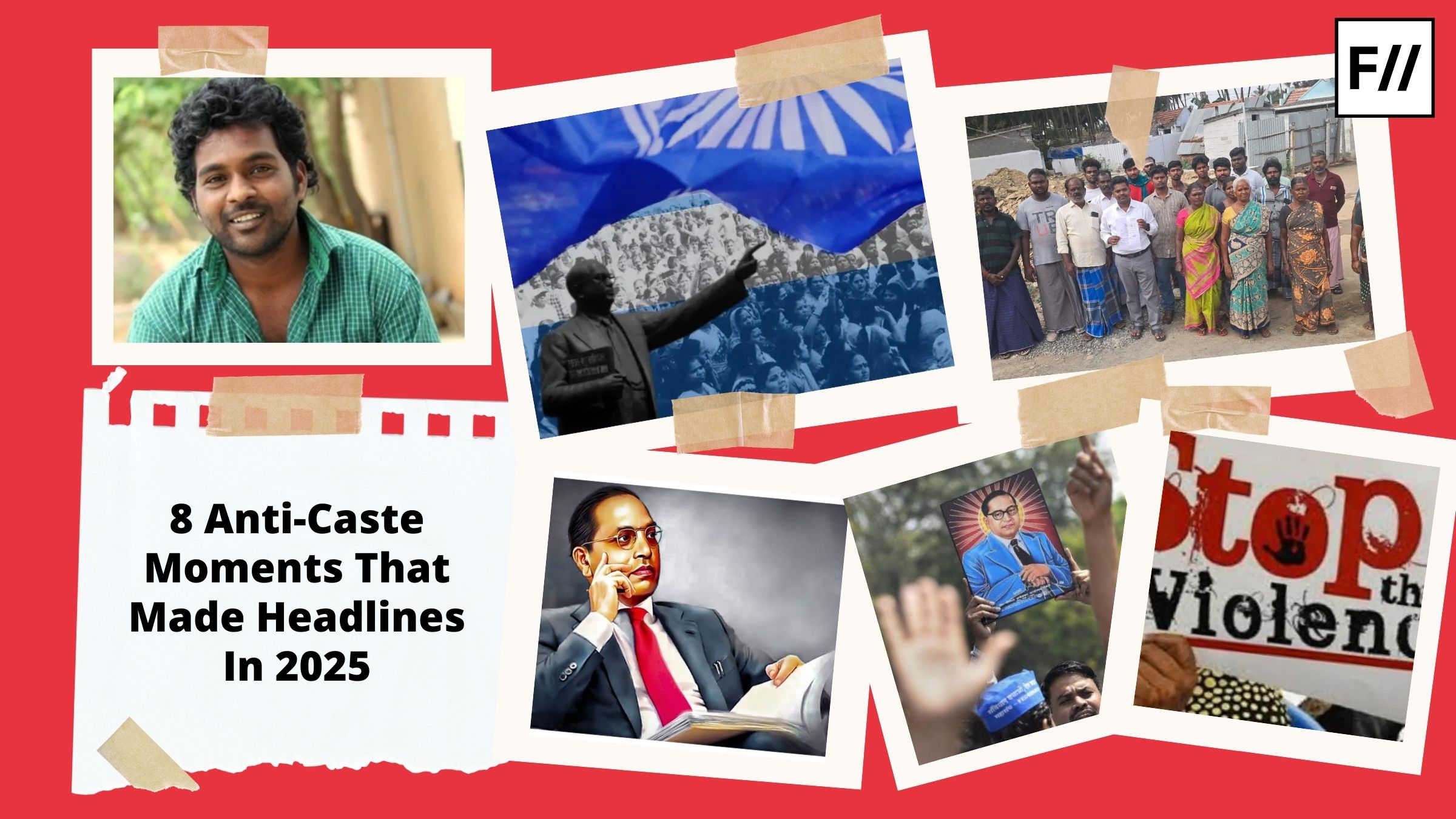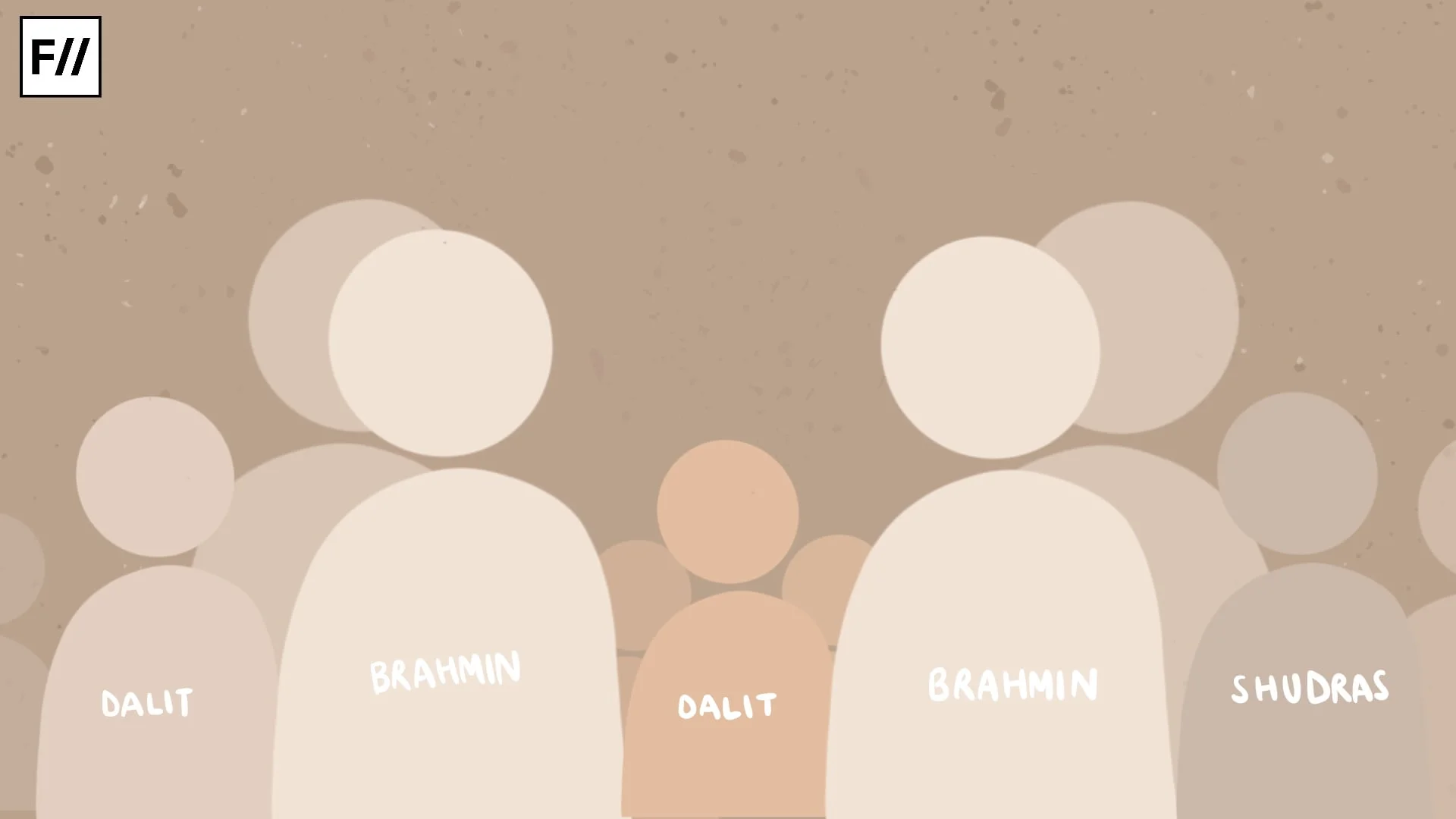A video documenting how a Dalit girl was allegedly asked to write her exams outside the classroom, has gone viral in social media for the past 2 weeks. The incident is reported to have happened to the girl studying in the 8th standard, at Swamy Chidbhavananda Matriculation Higher Secondary School in Senguttaipalayam village, Coimbatore. She was allegedly prevented from entering her examination hall because she was menstruating, and due to caste-based discrimination (due to her being part of a Scheduled Caste community).
Her mother is reported to have requested a separate classroom for her to write her exams (claiming she was menstruating for the first time), whereas her teachers had allegedly made her sit on a staircase outside the school instead. The girl was allegedly asked to sit thus on both April 7, 2025 and April 9, 2025 for both her Science and Social Sciences exam. She had reportedly complained of bodily pain after the first exam, post which her mother captured video evidence of the same predicament in the next exam.
Responses from government officials and civil society
A few members from the Senguttaipalayam village approached the Pollachi district sub-collector, to request him to take strict action against the school management. Coimbatore district collector (Pavankumar G), confirmed later that the Coimbatore rural police had conducted an inquiry on the case. Three individuals from the school’s management had been booked under various sections of the Prevention of Atrocities (SC/ST) Act. Tamilnadu’s Minister of Education, Anbil Mahesh Poiyyamozhi informed that the school’s principal had been suspended temporarily, and that further strict action will be taken as deemed necessary.

The video her mother had taken has sparked nation-wide attention to the issue at a great scale. It has gone viral on social media platforms such as Instagram, Youtube and Facebook. It has also garnered the attention of several media houses, all of whom report the incident with alacrity and detail. Several from civil society organisations, NGOs, and the general public call for stringent and large-scale action on the school, especially appealing to the Chief Minister of Tamil Nadu.
Many condemn the actions of the teachers and the school management to be regressive, anachronical and inhumanely discriminatory, claiming that menstruation should be treated as a normal biological process rather than a fanaticised sanitary issue. There has been a lot of public introspection and voicing out of how despite educational and policy wise progress for women, such discriminatory practices still exist in some parts of our country.
News coverage on this issue has been drastic over the past week. Several platforms focus on the ongoing prevalence of age-old customs followed for menstruating individuals.
News coverage on this issue has been drastic over the past week. Several platforms focus on the ongoing prevalence of age-old customs followed for menstruating individuals. They focus on how the girl, at the tender age of 13, is a victim of such regressive and inhumane practices, and on how her Fundamental Rights on equality and access have been breached. There has also been documentation of how the public is responding to this issue in outrage, and quite uniformly against such discriminatory treatment due to menstruation.
Menstrual taboos – a historical practice
Historically, taboos on menstruation have manifested societally in many forms. Menstruating individuals have been made to sit, eat and sleep in separate rooms in their own houses. They have been barred from participating in religious rituals (due to claims like the ‘impurity’ of their touch) and entering places of worship. They were outcast from mainstream society, during these 3-7 days of bleeding, because such a condition seemed to render the individual ‘impure’.

Existing patriarchal and structural norms dictated that these practices had to be followed during every period of menstruation. These discriminatory practices have greatly hindered the mobility, educational and social progress of menstruating individuals, confining them both geographically and socially. School-going girls being pressured to drop-out of school, apply for leave or to strain less, have been societally normalised during menstruation.
Most of Indian society has never questioned these practices normatively. That is, they have never wondered why, how, or what logic/reasoning such practices were based on. Whether or not such a logic exists is also debated. In contemporary times, various pseudo-scientific claims have arisen. They claim that menstruating individuals emit ‘bad energy’, and that segregation based on ‘impurity’ is mainly for their ‘rest’. However, most of these claims are scientifically unfounded.
Double discrimination – intersectionality of gender and caste
Mainstream feminist movements in India have a limited focus on gender, often neglecting the intertwined realities of caste. They fail to address how ‘upper’ caste entrenched patriarchy enforces menstrual taboos to maintain their caste hierarchies, marginalising Dalit menstruating individuals further. One thing to note, is that despite the case being registered as one of caste discrimination, news outlets seem to be focused more on the aspect of gender discrimination. While it is true that menstruation was at the base of the issue, the intersectionality of caste and gender in such discrimination cannot be ignored.
While it is true that menstruation was at the base of the issue, the intersectionality of caste and gender in such discrimination cannot be ignored.
According to a 2022 report by the National Crime Records Bureau of India (NCRB), 65147 people have been arrested in the year 2022 nationally under the SC/ST (Prevention of Atrocities) Act. On the other hand, Tamilnadu has been recorded to have a 31.8% rate on Crimes committed against Children (under IPC, excluding POSCO). There is also record of nearly a 1300 (in count) difference between recorded cases under the POSCO Act, between boys and girls (between ages of 12-16).
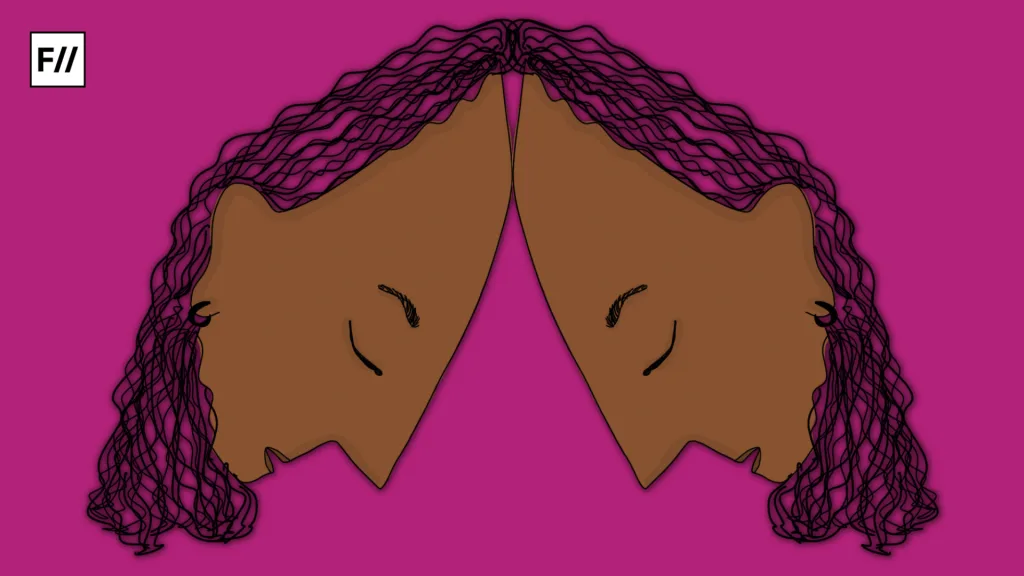
What these statistics account for, is on how the acts behind these numbers cut across different identities of gender, caste and class. The notions of purity, rituals and taboo, are strikingly similar in discrimination due to gender and that of due to caste. Before untouchability was abolished in 1950, practices of assigning members of the Dalit community separate places to eat, sleep, enter a building, fill water and places of worship happened at a much larger scale than today.
Deepthi Sukumar, in her article ‘Personal Narrative: Caste is my Period’, says that despite the absence of menstrual taboos in her own community, she was discriminated against by upper-caste individuals who deemed her impure solely based on her caste. This, she reported, was irrespective of her menstrual status.
The placement of these individuals on an unfavourable social hierarchy, simply due to their identity, is common in historical religious practices of both caste and gender discrimination. It is important for civil society and media houses of today, to elucidate, research and spread awareness of such intersecting identities and experiences of discrimination.
This double discrimination could increase the intensity of such practices, making it all the more important for the voices of those experiencing it to be heard, and their lived experiences to be portrayed as what they truly are.
Dismantling the entrenched hierarchies of caste and gender needs, requires spreading awareness that is intersectional.
Dismantling the entrenched hierarchies of caste and gender needs, requires spreading awareness that is intersectional. It needs to capture how different identity-based oppressions cross and feed into one another. Menstruation should no longer be a site of shame, particularly when its policing occurs in the context of caste exclusion.
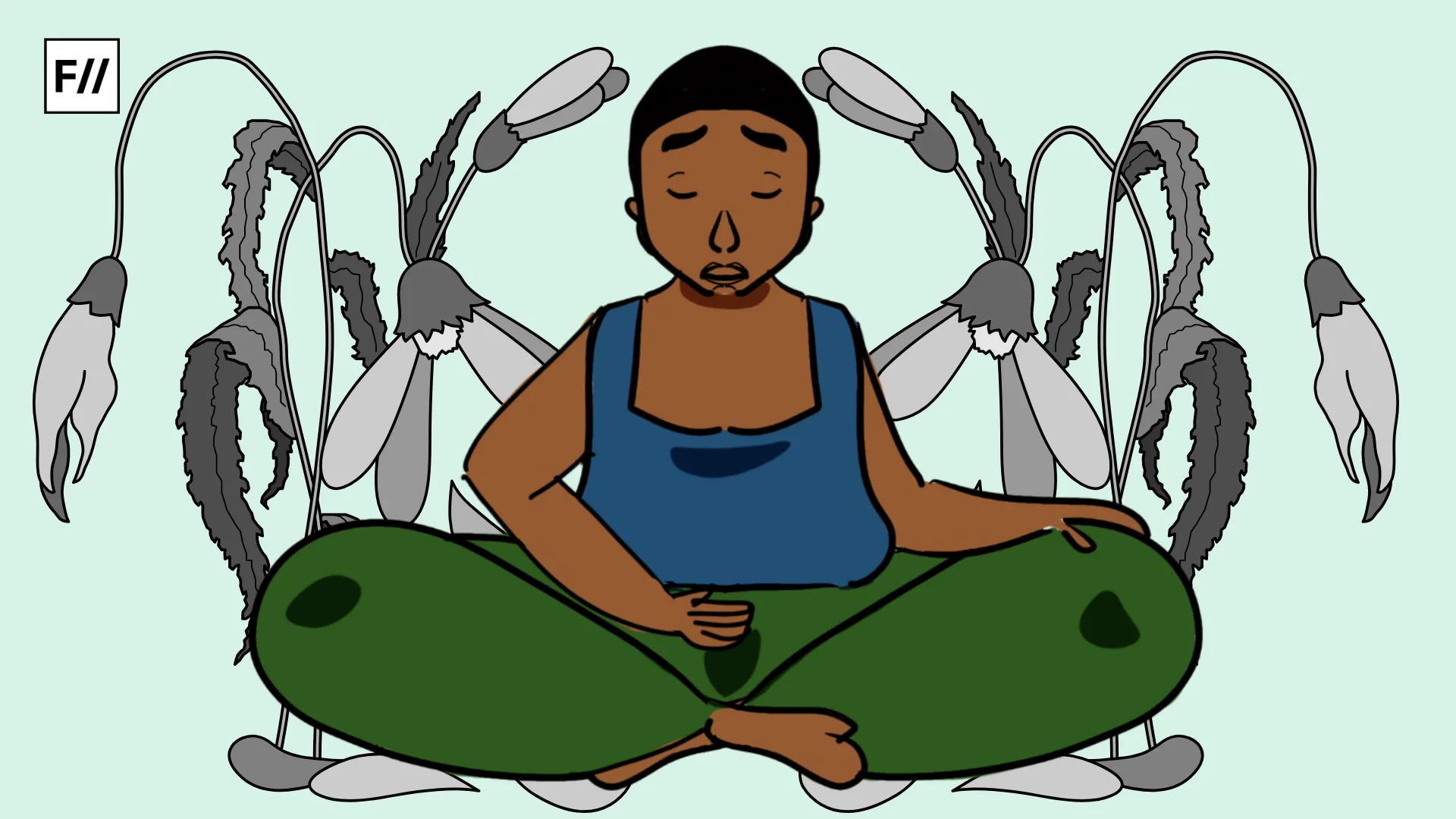
Awareness needs to go beyond gender binaries and caste markers, mobilising communities, schools, and institutions in self-reflection. It is only through this kind of structural, inclusive awareness that we can guarantee no child is excluded from dignity, space, or schooling due to who they are or what their body does.
About the author(s)
Lakshmi Yazhini is a post graduate student, pursuing an Integrated Masters in Development Studies, at the Indian Institute of Technology Madras. Based in Chennai, Yazhini has an avid research interest in the intersectionality of feminist geography and the state, in peripheral cities. In her free time, she likes to bake, do yoga, read fiction and pen down her thoughts in her journal (which are most often about the micro inequalities around her). Yazhini hopes to explore, write and make a difference about these as a policymaker some day.
